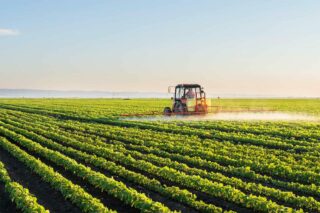Agriculture is a cardinal driver of the African economy. About 60 percent of the sub-Saharan population are smallholder farmers, and 23 percent of the sub-Saharan GDP comes from just agriculture. With 60 percent of the world’s unused arable land and 54 percent of Africa’s population working in the sector, the continent has enormous agricultural promise. But there are challenges. Farmers lack access to quality seedlings, fertilizers, and best farming practices. Additionally, they are feeling the adverse effect of climate change. Thankfully, agritech startups are rising to solve some of these challenges.
Africa’s agritech space has shown impressive growth in the last few years. According to a report released by Disrupt-Africa, over US$19 million was invested in the Agritech sector in Africa between 2016- 2018. Last year, the space secured a total funding of US$95,101,000, an increase of 58.5 percent from US$59,990,000 in 2020. With a projected value of $1 trillion by 2030, the continent is poised to become the global centre of agri-tech solutions. But the market remains untapped. This is because, although agritech startups in Africa have been active in the market for about a decade, many agricultural sub-sectors are yet to experience technological transformation.
On another end, existing agritech startups face challenges in rolling out their products and services. Despite their efforts to promote the adoption of innovative technologies, many smallholder farmers are still alien to this new wave of development for several reasons. Farmers’ education is still an enormous barrier on the continent. Although times are changing, many smallholder farmers still have low levels of education. Some farmers never got above a middle school education, and many others are illiterate. These people often depend on traditional farming practices passed on by their predecessors. These methods of farming are unsustainable.
Education plays a vital role in Africa’s rapidly changing technological environment. Technological solutions rendered by agritech companies often need a degree of technical know-how, which is made easier by having a formal education. For example, the use of improved seedlings, irrigation technologies, vertical farming, aquaponics, chemical fertilizers, etcetera requires a level of education. Farmers with this kind of education are more likely to adopt technology and innovations rapidly than their less-educated counterparts.
Many smallholder farmers living in the hinterlands mostly speak their native dialects; this poses a challenge to agritech instructors or trainers who often have training manuals and product manuals written in official languages – most times, English language. The issue is even more complicated when the training of these farmers is on a grander scale, and it incorporates people from diverse cultural backgrounds. Getting a fixer is usually the alternative, and this can be arduous, time-consuming, and uneconomical.
Many technological solutions rolled out by agritech companies often depend on basic but essential energy and internet infrastructure, which are deficient on the African continent. Despite recent growth in internet connectivity, internet penetration is slow on the continent. As of December 2020, internet penetration was at 43 percent, meaning about six out of 10 Africans were not using the web. In Nigeria, data-driven agritech platforms like Farmz2u tackle the challenge of poor internet connection and penetration. As a web-based platform, poor internet gets in the way of their service, depriving farmers of access to services like loans, machinery, seeds and fertilizers, and being digitally connected to available buyers. Africa will require an investment totalling $100 billion (€86 billion) to plug every citizen into the internet by 2030, according to a World Bank estimate.
According to the African Development Bank (AFDB), 640 million Africans have no access to energy, corresponding to an electricity access rate of just over 40 percent, the lowest in the world. Many smallholder farmers live in areas off the grid. Hardware agritech products like cold storage units, drones, automated irrigation, etcetera all require access to energy. With no energy to power these products, farmers are less likely to be interested in their adoption. Solar power has become a viable alternative and renewable source of energy, and it is gaining traction on the continent. But since it is not yet widespread, its purchase can be expensive for a regular farmer.
The high cost of some agritech products and services is another reason for their low adoption rate. The agritech space is often the least funded sector in the tech ecosystem compared to fintech, ed-tech, insure-tech, etcetera. A significant number of agritech startups on the continent are at their nascent stage and require adequate funding to scale up their production. As a result, the few product rollouts they have in the market tend to be expensive for a smallholder farmer due to a lack of funding to help subsidize cost in cases where mass production is non-existent. For example, after Noel N’guessan’s innovation Kubeko (a biowaste processing equipment) made it to the final stage for the Africa Prize for engineering, the production cost was reduced from US$800 to US$700. This is the significant impact funding has on the prices of products. With adequate funding in the agritech space, startups can roll out cost-effective products and services for smallholder farmers.








